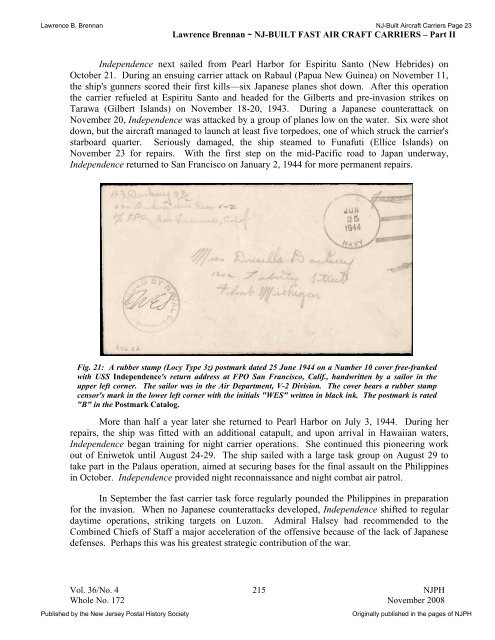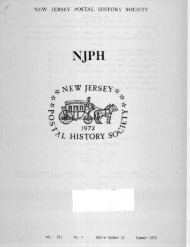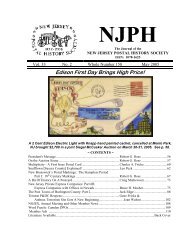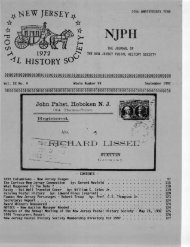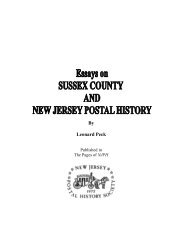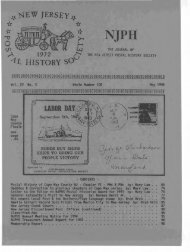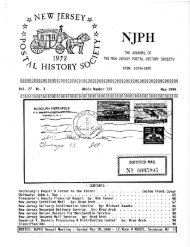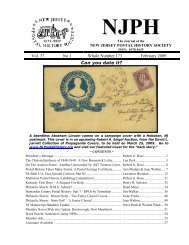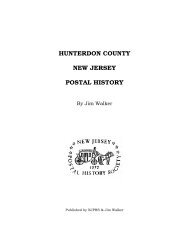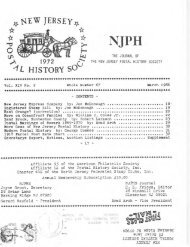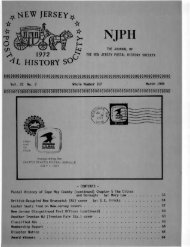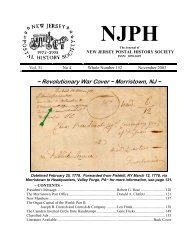By Captain Lawrence B. Brennan, U.S. Navy (Ret.) - New Jersey ...
By Captain Lawrence B. Brennan, U.S. Navy (Ret.) - New Jersey ...
By Captain Lawrence B. Brennan, U.S. Navy (Ret.) - New Jersey ...
Create successful ePaper yourself
Turn your PDF publications into a flip-book with our unique Google optimized e-Paper software.
<strong>Lawrence</strong> B. <strong>Brennan</strong> NJ-Built Aircraft Carriers Page 23<br />
<strong>Lawrence</strong> <strong>Brennan</strong> ~ NJ-BUILT FAST AIR CRAFT CARRIERS – Part II<br />
Independence next sailed from Pearl Harbor for Espiritu Santo (<strong>New</strong> Hebrides) on<br />
October 21. During an ensuing carrier attack on Rabaul (Papua <strong>New</strong> Guinea) on November 11,<br />
the ship's gunners scored their first kills—six Japanese planes shot down. After this operation<br />
the carrier refueled at Espiritu Santo and headed for the Gilberts and pre-invasion strikes on<br />
Tarawa (Gilbert Islands) on November 18-20, 1943. During a Japanese counterattack on<br />
November 20, Independence was attacked by a group of planes low on the water. Six were shot<br />
down, but the aircraft managed to launch at least five torpedoes, one of which struck the carrier's<br />
starboard quarter. Seriously damaged, the ship steamed to Funafuti (Ellice Islands) on<br />
November 23 for repairs. With the first step on the mid-Pacific road to Japan underway,<br />
Independence returned to San Francisco on January 2, 1944 for more permanent repairs.<br />
Fig. 21: A rubber stamp (Locy Type 3z) postmark dated 25 June 1944 on a Number 10 cover free-franked<br />
with USS Independence's return address at FPO San Francisco, Calif., handwritten by a sailor in the<br />
upper left corner. The sailor was in the Air Department, V-2 Division. The cover bears a rubber stamp<br />
censor's mark in the lower left corner with the initials "WES" written in black ink. The postmark is rated<br />
"B" in the Postmark Catalog.<br />
More than half a year later she returned to Pearl Harbor on July 3, 1944. During her<br />
repairs, the ship was fitted with an additional catapult, and upon arrival in Hawaiian waters,<br />
Independence began training for night carrier operations. She continued this pioneering work<br />
out of Eniwetok until August 24-29. The ship sailed with a large task group on August 29 to<br />
take part in the Palaus operation, aimed at securing bases for the final assault on the Philippines<br />
in October. Independence provided night reconnaissance and night combat air patrol.<br />
In September the fast carrier task force regularly pounded the Philippines in preparation<br />
for the invasion. When no Japanese counterattacks developed, Independence shifted to regular<br />
daytime operations, striking targets on Luzon. Admiral Halsey had recommended to the<br />
Combined Chiefs of Staff a major acceleration of the offensive because of the lack of Japanese<br />
defenses. Perhaps this was his greatest strategic contribution of the war.<br />
Vol. 36/No. 4<br />
215<br />
NJPH<br />
Whole No. 172 November 2008<br />
Published by the <strong>New</strong> <strong>Jersey</strong> Postal History Society<br />
Originally published in the pages of NJPH


